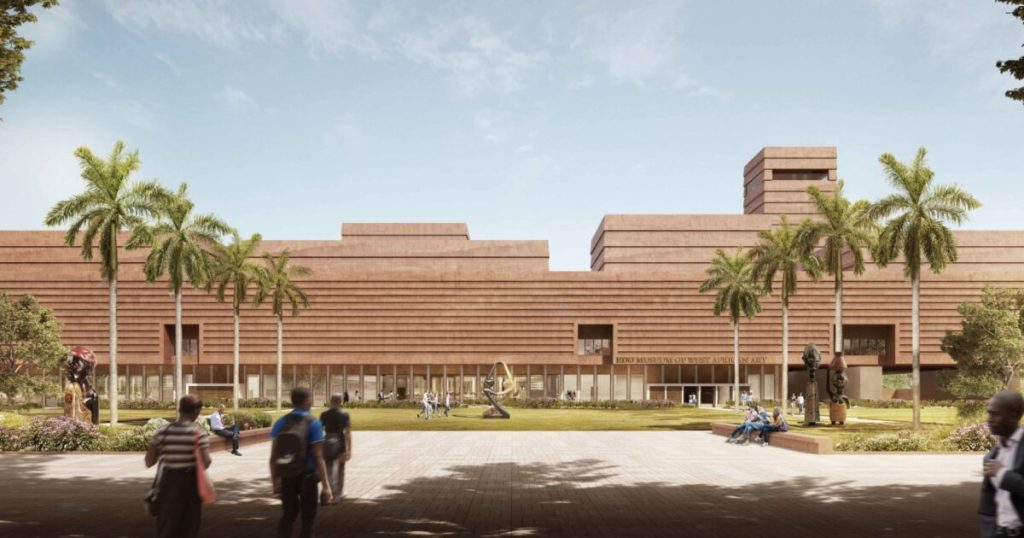The Museum of West African Art (MOWAA), poised to become a leading institution in the preservation and celebration of West African heritage, is actively seeking local investment to complement the substantial $25 million already raised from international donors. Phillip Ihenacho, the Executive Director, emphasized the importance of Nigerian ownership in the project, highlighting the desire of global partners to witness a strong commitment from the nation itself. This appeal was made during a fundraising dinner held in Lagos, hosted by MOWAA Development Board member Ike Chioke and his wife Yvonne, which served as a dual celebration of the museum’s progress and the return of the Nigeria Pavilion from the 2024 Venice Biennale.
The dinner provided a platform to underscore the urgency of safeguarding Nigeria’s cultural identity through strategic investments in its rich heritage. Chioke, a prominent investment banker and cultural advocate, stressed the significance of MOWAA not merely as a traditional museum, but as an institute dedicated to educating Nigerians about their history, heritage, and traditions. He emphasized the timeliness of this initiative, coinciding with a period of increased global attention on Nigeria’s burgeoning cultural scene. With the first of its buildings operational on its Benin-City campus, a location chosen for its historical significance as a center of bronze casting, MOWAA is transitioning from a concept to a vibrant reality. Chioke urged attendees, comprising art patrons, collectors, and cultural enthusiasts, to support the museum’s growth, recognizing its potential as a beacon illuminating Nigeria’s narrative.
Ihenacho echoed Chioke’s sentiments, elaborating on MOWAA’s founding ethos of not just restitution and remembrance, but also revitalization. He emphasized the museum’s focus on fostering a new generation of creatives across various disciplines, including visual arts, design, music, and film. Drawing attention to the evolving global perception of Nigeria, Ihenacho highlighted the shift from negative stereotypes to admiration for the country’s vibrant arts and culture. He posited that this cultural influence would eventually surpass oil and gas as Nigeria’s defining strength. MOWAA, therefore, is not merely a repository of the past, but a dynamic platform showcasing Nigeria’s cultural assets and propelling its creative future.
Ihenacho showcased MOWAA’s state-of-the-art facilities, including the largest and most advanced collections and storage facility in Africa, built with sustainable rammed-earth architecture and powered entirely by solar energy. He highlighted its unique status as the only EDGE-certified museum globally, situated on the site of the largest archaeological excavation in Nigerian history. This emphasis on innovation and sustainability serves to further attract potential investors, showcasing the museum’s commitment to both preserving the past and shaping the future. Ihenacho’s appeal for local investment emphasized the catalytic effect of even modest contributions, unlocking further funding and solidifying Nigerian ownership of the project.
Ore Disu, Director of MOWAA, outlined the museum’s upcoming programs, including artist residencies, conservation efforts, and knowledge production initiatives. She stressed the transition from conceptualization to activation, highlighting the planned influx of scholars, traditional craft makers, and contemporary creators to foster dialogue and collaboration within the museum’s vibrant ecosystem. Disu underscored MOWAA’s commitment to not only preserving existing art but also inspiring new works rooted in a deep understanding of cultural heritage. This emphasis on fostering creativity positions MOWAA as a catalyst for artistic innovation, challenging existing narratives and exploring new avenues for creative expression.
The evening culminated with Aindrea Emelife, Curator at MOWAA, sharing her personal journey with the organization and the transformative impact of the Nigeria Pavilion project at the Venice Biennale. She described ‘The Nigeria Imaginary’, the pavilion’s theme, as an open question exploring the multifaceted nature of Nigerian identity. The pavilion served as a space where seemingly contrasting elements – protests and poetry, silence and noise, ancient art and contemporary thought – could coexist harmoniously. Emelife praised the participating artists for their thought-provoking works, reaffirming the power of art as a declaration, not merely decoration. The event concluded with a resounding affirmation of MOWAA’s significance as not just a museum, but a powerful embodiment of Nigeria’s story, narrated by Nigerians themselves. This collective ownership and narrative control are at the heart of MOWAA’s mission, ensuring the authentic and impactful representation of West African art and culture.


